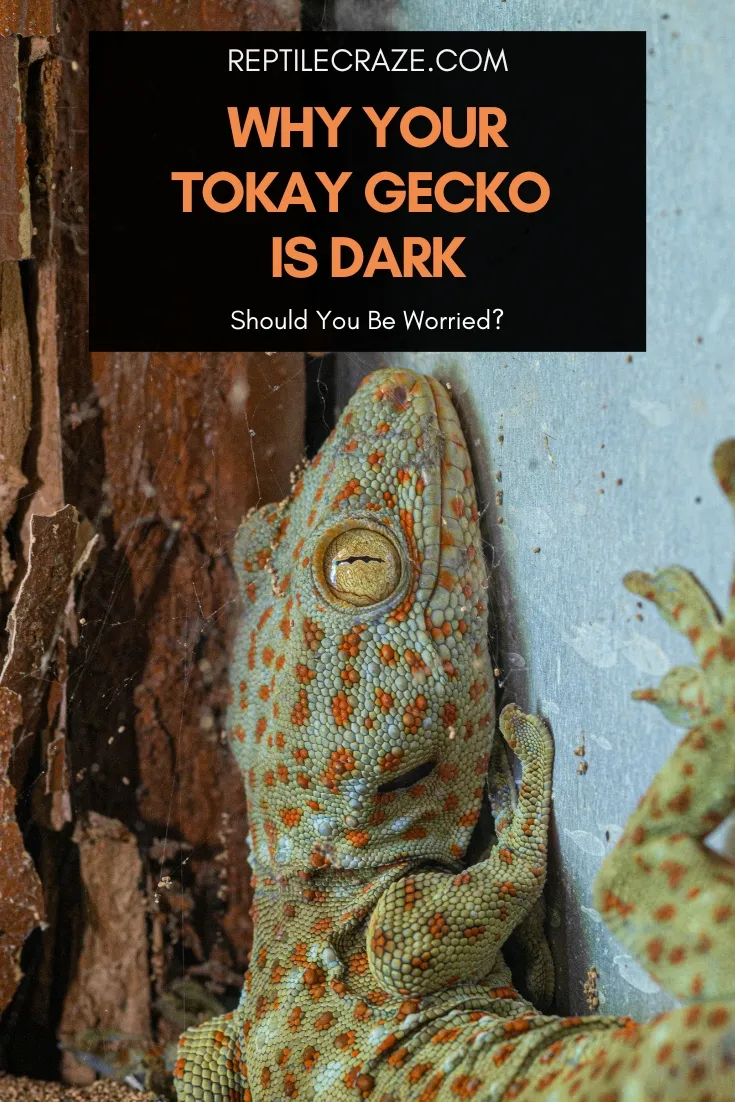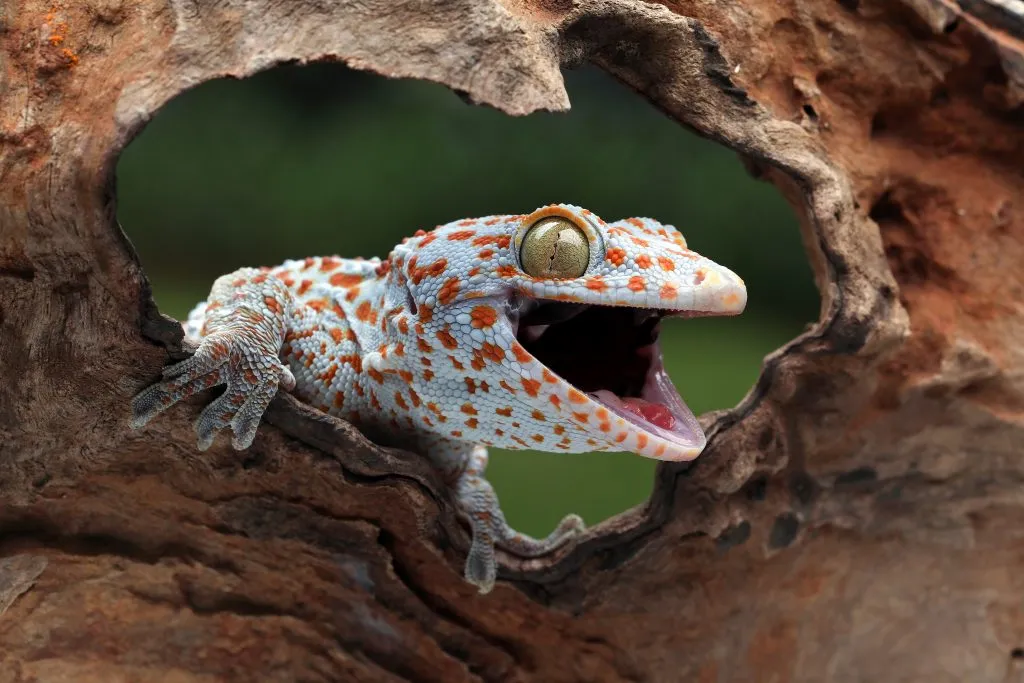
If you’re a gecko enthusiast, hearing the distinct, “Tok. Tok. Tok-kai. Tok-kai. Tok-kai.” is probably enough to conjure up an image of the visually striking Tokay Gecko. The Tokay’s coloring is often as identifiable as its call, so it can be concerning your gecko’s colors start to darken.
Tokay geckos are able to darken their colors to blend in with their environment. However, a darker color can also have problematic reasons like stress, illness, or incorrect husbandry. Female tokay geckos are usually darker than males and all tokay geckos get darker with age.
In this article, we investigate both unproblematic and concerning causes of dark coloration in Tokay Geckos and offer some suggestions to help keep your Tokay Geckos looking and feeling their best.
What’s a Tokay Gecko’s Typical Color?
Tokay Geckos (Gekko Geckos) typically have a pale blue-grey base color with distinct orange-red or black spots scattered from their head to tail. Their underside is usually off-white. However, they can deviate from this typical coloration.

While Tokay Geckos can’t abruptly change their color like a chameleon, they can lighten and darken their skin. This can result in quite a significantly different appearance.
Unproblematic Reasons Why Your Tokay Gecko is Dark
Noticing your Tokay Gecko darkening their skin in the following situations is usually nothing to worry about:
1. Your Tokay Is Settling In
It’s fairly common to pick out a new brightly colored Tokay from the pet store, only for it to turn much darker once you bring it home.
This is often because your new pet is just adjusting to its environment. Once it’s had a day or two to settle in and get to know its new home, your Tokay should start to return to its natural coloring.
2. Camouflage
Like some other geckos, Tokay Geckos use a type of camouflage called crypsis, which allows them to hide from predators by blending in with the environment.
Tokays do this by adjusting the brightness of their skin to better match their surroundings. So, if you use a dark-colored substrate, your Tokay may be darkening to match it.
3. Your Tokay is Female
Female Tokay Geckos aren’t as vibrant as males. Their base color can appear more a darker brown-grey than pale blue-grey, and their spots may be duller.
If your Tokay is female and they’ve always been a darker color, it might just be her natural coloration!
4. Aging
As Tokay Geckos age, they lose some of their vibrancy. Their spots may become less prominent As a result, their skin may appear darker.
Captive Tokay Geckos live to about 10 years old, so if your gecko is getting on in Tokay years, that could explain its darker appearance.

Problematic Reasons Why Your Tokay Gecko is Dark
If none of the above reasons explain your Tokay’s dark color, it’s important to consider the more serious causes. These are:
1. Stress
Like other geckos, Tokay Geckos are known to darken in response to stress. Common causes of stress in Tokays are:
- Sharing an enclosure: Tokay Geckos are solitary animals that prefer living alone.
- Being handled: handling can be stressful and Tokays are notorious for not being the friendliest reptiles, so only handle them when absolutely necessary.
- Light during the night: being nocturnal, it’s important to maintain darkness during the night.
- Loud noises and vibrations: this may create a considerable amount of stress for Tokays, so try to eliminate any sources of noise and vibrations.
2. Your Tokay is Cold
Studies indicate that Tokay Geckos thermoregulate, so darkening may be an attempt to absorb more heat. Tokay Geckos are from tropical climates that are warm year-round.
So, when kept as pets in countries that have cold seasons, it’s critical to make sure your Tokay doesn’t get chilly.
Keep a thermometer in the
3. Inadequate Environment
Tokay Geckos are arboreal, which means they need plenty of verticle space and elevated hiding areas.
Some Tokay owners notice that their Tokay Geckos darken when on the floor and return to their normal color when they climb up.
So, make sure your gecko’s enclosure is tall enough to climb and has lots of foliage and crevices to mimic the tropical environments they come from. Without this, your Tokay may feel vulnerable and darken in response.
4. Illness
If you’ve ruled out the causes discussed in this post, darkening could be a sign of an underlying health concern. Take your Tokay to an experienced veterinarian if it doesn’t return to its usual color, or if you notice any of these symptoms:
- Dull eyes
- Inactivity
- Loss of appetite
- Thin body and tail
- Mucus around the mouth or nose
- Diarrhea
Tip: For more information, read our tokay gecko care guide!
- Enchi Ball Python: A Unique and Stunning Morph of Python regius - March 27, 2025
- Emerald Tree Monitor: The Enigmatic Green Guardian of the Rainforest - March 26, 2025
- The Egyptian Cobra (Naja haje): A Fascinating Serpent - March 25, 2025
